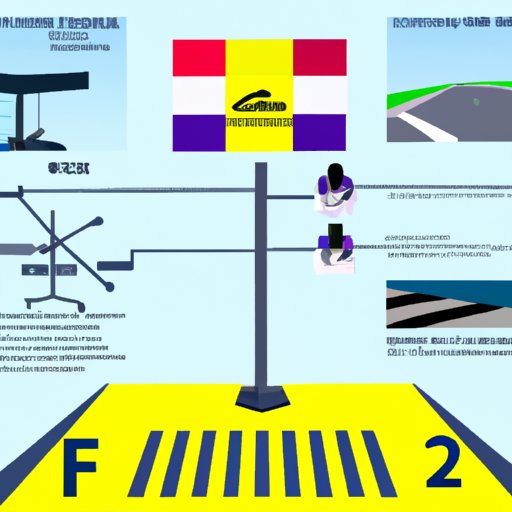Introduction
Formula 1 racing is one of the most popular forms of motorsport in the world. The sport has been around since 1950 and continues to captivate audiences with its high-speed action and thrilling showdowns between drivers. But before a race can start, teams must go through the qualifying process, which determines the order of the starting grid for the race.
Exploring the Qualifying Process in Formula 1 Racing
Qualifying is an important part of any Formula 1 race. The qualifying process determines the order of the starting grid, and the team’s performance in qualifying will have a direct impact on their chances of success in the race. So it’s essential that teams understand the rules and regulations that govern qualifying and the strategies they need to employ in order to be successful.
Rules and Regulations
The qualifying process in Formula 1 is governed by strict rules and regulations set out by the FIA (Fédération Internationale de l’Automobile). These rules include a limited amount of time each driver has to complete their lap, as well as the requirement that cars must not exceed the speed limit of 107% of the fastest lap time. Drivers must also adhere to track limits, meaning they cannot drive off the track in order to gain an advantage.
Step-by-Step Guide
The qualifying process for a Formula 1 race typically takes place over three sessions. During the first session, known as Q1, all 20 drivers take to the track and attempt to set the fastest lap time they can. At the end of the session, the slowest five drivers are eliminated and the remaining 15 move on to Q2. In this session, the same process is repeated and the slowest five drivers are eliminated once again. This leaves 10 drivers who will compete in the final session, Q3, where the fastest lap time will determine the order of the starting grid.

What It Takes to Make the Grid in Formula 1
Making it onto the starting grid in Formula 1 is no easy feat. Teams must carefully strategize and execute their plan in order to achieve the best possible result. Here are some of the key elements that go into making the grid in Formula 1.
Different Qualifying Sessions
As mentioned above, the qualifying process consists of three different sessions: Q1, Q2, and Q3. Each session has its own set of rules and regulations, and teams must be prepared for each one in order to maximize their chances of success. For example, in Q1, teams may opt to use the softest tire compound available in order to maximize grip and lap times. However, this strategy may not be suitable for Q2 or Q3, where teams may choose to use tires with more durable compounds in order to ensure better performance over the course of the race.
Strategies for Qualifying Success
In addition to understanding the rules and regulations of each qualifying session, teams must also employ strategic tactics in order to succeed. This includes factors such as fuel levels, tire compounds, and setup adjustments. Teams must also pay close attention to the weather conditions and adjust their strategies accordingly. According to Mercedes Team Principle Toto Wolff, “In qualifying, you have to consider the weather, the tyres, the fuel load and how much you can push the car. It’s about putting together all those components and finding the right balance.”
Conclusion
Qualifying is an essential part of any Formula 1 race. The qualifying process determines the order of the starting grid, and teams must understand the rules and regulations that govern it in order to be successful. Teams must also employ strategic tactics such as fuel levels, tire compounds, and setup adjustments in order to maximize their chances of success. By following these steps, teams can put themselves in the best position to make the grid in Formula 1.
(Note: Is this article not meeting your expectations? Do you have knowledge or insights to share? Unlock new opportunities and expand your reach by joining our authors team. Click Registration to join us and share your expertise with our readers.)
